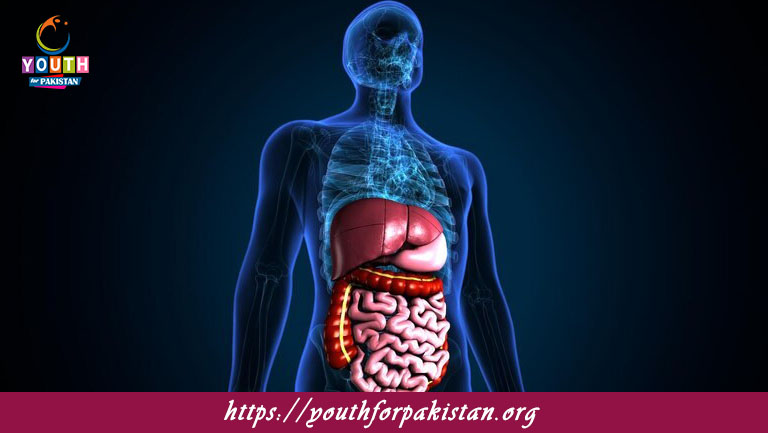Welcome to the Digestive System MDCAT MCQs with Answers. In this post, we have shared Digestive System Multiple Choice Questions and Answers for PMC MDCAT 2024. Each question in MDCAT Biology offers a chance to enhance your knowledge regarding Digestive System MCQs in this MDCAT Online Test.
Which organ is primarily responsible for nutrient absorption?
a) Stomach
b) Small intestine
c) Large intestine
d) Liver
What is the role of bile in digestion?
a) To digest proteins
b) To emulsify fats
c) To neutralize stomach acid
d) To absorb nutrients
Where does the majority of digestion and nutrient absorption occur?
a) Stomach
b) Small intestine
c) Large intestine
d) Esophagus
What enzyme is responsible for breaking down proteins in the stomach?
a) Amylase
b) Pepsin
c) Lipase
d) Lactase
Which part of the digestive system is primarily involved in water absorption?
a) Stomach
b) Small intestine
c) Large intestine
d) Esophagus
What is the primary function of the pancreas in digestion?
a) To produce bile
b) To secrete digestive enzymes
c) To absorb nutrients
d) To store nutrients
Which of the following structures prevents food from entering the trachea during swallowing?
a) Epiglottis
b) Uvula
c) Pharynx
d) Esophagus
What is the role of the villi in the small intestine?
a) To secrete digestive enzymes
b) To increase surface area for nutrient absorption
c) To produce bile
d) To absorb water
Which hormone stimulates the release of gastric acid?
a) Insulin
b) Gastrin
c) Secretin
d) Cholecystokinin
What is the function of the large intestine?
a) To digest proteins
b) To absorb nutrients
c) To absorb water and form feces
d) To produce digestive enzymes
Which enzyme is responsible for digesting carbohydrates?
a) Pepsin
b) Amylase
c) Lipase
d) Trypsin
Where is the majority of digestive enzyme production located?
a) Liver
b) Small intestine
c) Pancreas
d) Stomach
Which organ stores bile produced by the liver?
a) Pancreas
b) Gallbladder
c) Duodenum
d) Stomach
What is the function of the salivary glands?
a) To produce bile
b) To secrete digestive enzymes and lubricate food
c) To absorb nutrients
d) To produce stomach acid
What structure connects the throat to the stomach?
a) Trachea
b) Esophagus
c) Duodenum
d) Pharynx
Which part of the digestive system is primarily involved in the mechanical breakdown of food?
a) Stomach
b) Small intestine
c) Large intestine
d) Esophagus
Which of the following enzymes is involved in fat digestion?
a) Amylase
b) Pepsin
c) Lipase
d) Lactase
What is the primary function of the liver in digestion?
a) To produce bile
b) To absorb nutrients
c) To secrete digestive enzymes
d) To filter toxins
Which of the following is NOT a function of the stomach?
a) Mechanical digestion
b) Chemical digestion
c) Absorption of nutrients
d) Secretion of hydrochloric acid
Which digestive organ is primarily involved in the final stages of digestion and absorption?
a) Large intestine
b) Small intestine
c) Liver
d) Pancreas
What is the role of hydrochloric acid in the stomach?
a) To digest proteins
b) To neutralize stomach acid
c) To kill bacteria and activate pepsin
d) To absorb nutrients
Which of the following structures is involved in both digestion and absorption?
a) Esophagus
b) Stomach
c) Large intestine
d) Small intestine
What is the primary purpose of the intestinal flora in the large intestine?
a) To aid in the digestion of proteins
b) To break down carbohydrates and produce vitamins
c) To produce bile
d) To secrete digestive enzymes
Which organ is responsible for the production of digestive enzymes and insulin?
a) Liver
b) Gallbladder
c) Pancreas
d) Small intestine
What is the primary function of the duodenum?
a) To absorb water
b) To digest proteins
c) To receive bile and pancreatic juices for digestion
d) To produce bile
Which type of digestion involves chewing and churning of food?
a) Chemical digestion
b) Mechanical digestion
c) Absorption
d) Secretion
What is the role of the rectum in the digestive system?
a) To absorb nutrients
b) To store and eliminate feces
c) To secrete digestive enzymes
d) To digest fats
Which enzyme breaks down lactose in the digestive system?
a) Amylase
b) Lactase
c) Lipase
d) Pepsin
Where does the initial breakdown of carbohydrates begin?
a) Stomach
b) Small intestine
c) Large intestine
d) Mouth
Which part of the digestive system is known for its “s-shaped” structure?
a) Duodenum
b) Jejunum
c) Ileum
d) Sigmoid colon
What substance neutralizes stomach acid in the small intestine?
a) Bile
b) Pancreatic juice
c) Hydrochloric acid
d) Saliva
Which structure absorbs the majority of nutrients from digested food?
a) Duodenum
b) Jejunum
c) Ileum
d) Large intestine
What is the primary function of the uvula?
a) To aid in digestion
b) To prevent food from entering the nasal cavity
c) To produce saliva
d) To secrete digestive enzymes
Which hormone stimulates the secretion of insulin from the pancreas?
a) Gastrin
b) Secretin
c) Insulin
d) Glucagon
What is the primary role of the liver in the metabolism of carbohydrates?
a) To store glucose as glycogen
b) To produce digestive enzymes
c) To absorb nutrients
d) To emulsify fats
What is the function of the pyloric sphincter?
a) To regulate the flow of bile into the duodenum
b) To control the passage of food from the stomach to the small intestine
c) To secrete digestive enzymes
d) To absorb nutrients
Which organ is involved in the detoxification of harmful substances?
a) Gallbladder
b) Pancreas
c) Liver
d) Small intestine
What type of digestion occurs in the mouth?
a) Mechanical digestion
b) Chemical digestion
c) Both mechanical and chemical digestion
d) Absorption
Which enzyme is responsible for digesting proteins in the stomach?
a) Amylase
b) Pepsin
c) Lipase
d) Lactase
Which part of the digestive system is primarily involved in the formation and elimination of feces?
a) Small intestine
b) Stomach
c) Large intestine
d) Pancreas
What is the function of the jejunum in the digestive system?
a) To store bile
b) To absorb nutrients
c) To secrete digestive enzymes
d) To digest fats
Which of the following is a function of the esophagus?
a) To secrete digestive enzymes
b) To absorb nutrients
c) To transport food from the mouth to the stomach
d) To produce bile
What is the role of the gallbladder in digestion?
a) To produce bile
b) To store and concentrate bile
c) To secrete digestive enzymes
d) To absorb nutrients
If you are interested to enhance your knowledge regarding Physics, Chemistry, Computer, and Biology please click on the link of each category, you will be redirected to dedicated website for each category.










